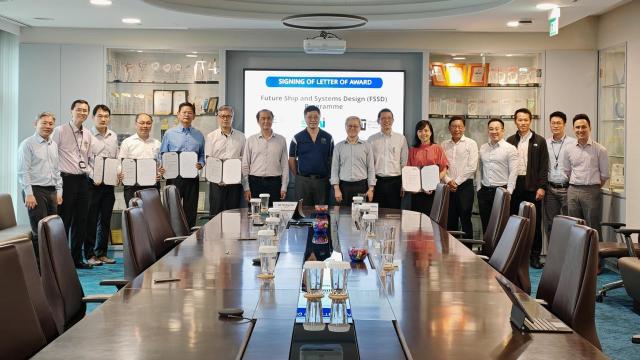Can habitual moderate to heavy housework help older persons maintain better mental and physical function? The answer is ‘yes’, according to a recent study by Associate Professor Wee Shiou Liang. He talks about his research projects, Singapore’s approach to long term care, and why SIT works closely with community partners.
- Rethinking the design of ‘future-ready’ nursing homes post-pandemic
- Changing views of what functional decline means for older persons
- Bridging research and real-world applications with a multi- and trans-disciplinary approach

A/Prof Wee at Yong-En Care Centre with the machines used in the Gym Tonic study.
Over the last decade, A/Prof Wee has been working with community partners to develop strategies and evaluate interventions to extend the health span of older persons, and better enable ageing in place. An example is working with health technology company, PulseSync to study the effectiveness of the Gym Tonic (GT) pneumatic machine resistance training programme for older persons.
Helping Older Persons Maintain Strength and Function
GT was initiated by the Lien Foundation in 2014, and PulseSync undertook the task of operationalising GT at community clubs and senior care centres. A research team led by A/Prof Wee evaluated the impact of GT using a pragmatic, randomised-controlled trial design from 2018 to 2019. A recent paper published in European Review of Aging and Physical Activity reported that GT could help lower the barrier for older persons to take up resistance training to maintain strength and function. In addition to high adherence, participants who completed the 12-week programme implemented in different centres over the two-year research period showed improved muscle strength and gait speed – demonstrating that GT could be effectively implemented at scale.
A/Prof Wee said, “From my other community-based research, multi-modal (physical and cognitive) functional training and activities can complement GT to achieve better functional performance for older adults in power, balance, endurance, and mental tasks relevant to maintaining an independent lifestyle.”
Breakthroughs on Ageing Research
Research on ageing, health and social services, and care integration must be multi- and trans-disciplinary with quick real-world industry and community applications and translations. A/Prof Wee feels that SIT’s established networks with industry and community facilitate the sharing of resources and multi-level collaborations required to advance and translate ageing research.
He shared, “Not only does SIT HSS work closely with allied health, nursing, social sciences, we also collaborate with other SIT academic clusters. We place strong emphasis on applied learning and research, making us well-placed to connect resources and advance research for heathy ageing.”
In addition, A/Prof Wee believes such collaborations are key to accelerating research translation.
“It is frequently said that it takes an average of 17 years for research evidence to reach clinical practice. However, the process of vaccine development from COVID-19 has shown that the lengthy period can be significantly shortened. It is entirely possible to reap faster and better returns from research. To speed up research translation, we must continually partner with industry and community stakeholders, health tech companies, as well as health and social agencies and providers,” he said.

Gym Tonic trainers attended an invited talk conducted by Lien Foundation in November 2021. Screenshot: A/Prof Wee Shiou Liang
Read about A/Prof Wee’s other research on the association between housework and health in older adults in BMJ Open.
About Singapore’s Approach to Ageing and Long-term Care
Singapore focuses on three broad areas: extending health span; ageing in place; and advancing care model – relevant to people living with chronic health problems that affect their ability to perform everyday activities. Long term care (LTC) in Singapore is currently undergoing rapid transformation in capacity, capability, and care model developments.
While the common public health approach to old age is to manage disease and deficits, the World Health Organisation (WHO) now defines healthy ageing as ‘a process of developing and maintaining the functional ability that enables well-being in older age’. This approach points towards optimising capacity together with cultivating an empowering environment for ageing in place. Therefore, nursing homes (NHs) functioning primarily as medical institutions in Singapore need to evolve to function as a residential home.
Caring for Nursing Home Residents
A large proportion of NH residents are persons with dementia (PWD). Dementia describes a group of symptoms affecting memory, thinking, and social abilities severely enough to interfere with daily life. This definition focuses on the nature and cause of the disease and its deficits. However, A/Prof Wee emphasised that we can also view dementia as a shift in the way an individual experiences the environment.
“Functional decline just means one’s life is not what it used to be, so one must gradually accept a ‘new normal’,” he said.
![[FA] SIT One SITizen Alumni Initiative_Web banner_1244px x 688px.jpg](/sites/default/files/2024-12/%5BFA%5D%20%20SIT%20One%20SITizen%20Alumni%20Initiative_Web%20banner_1244px%20x%20688px.jpg)


